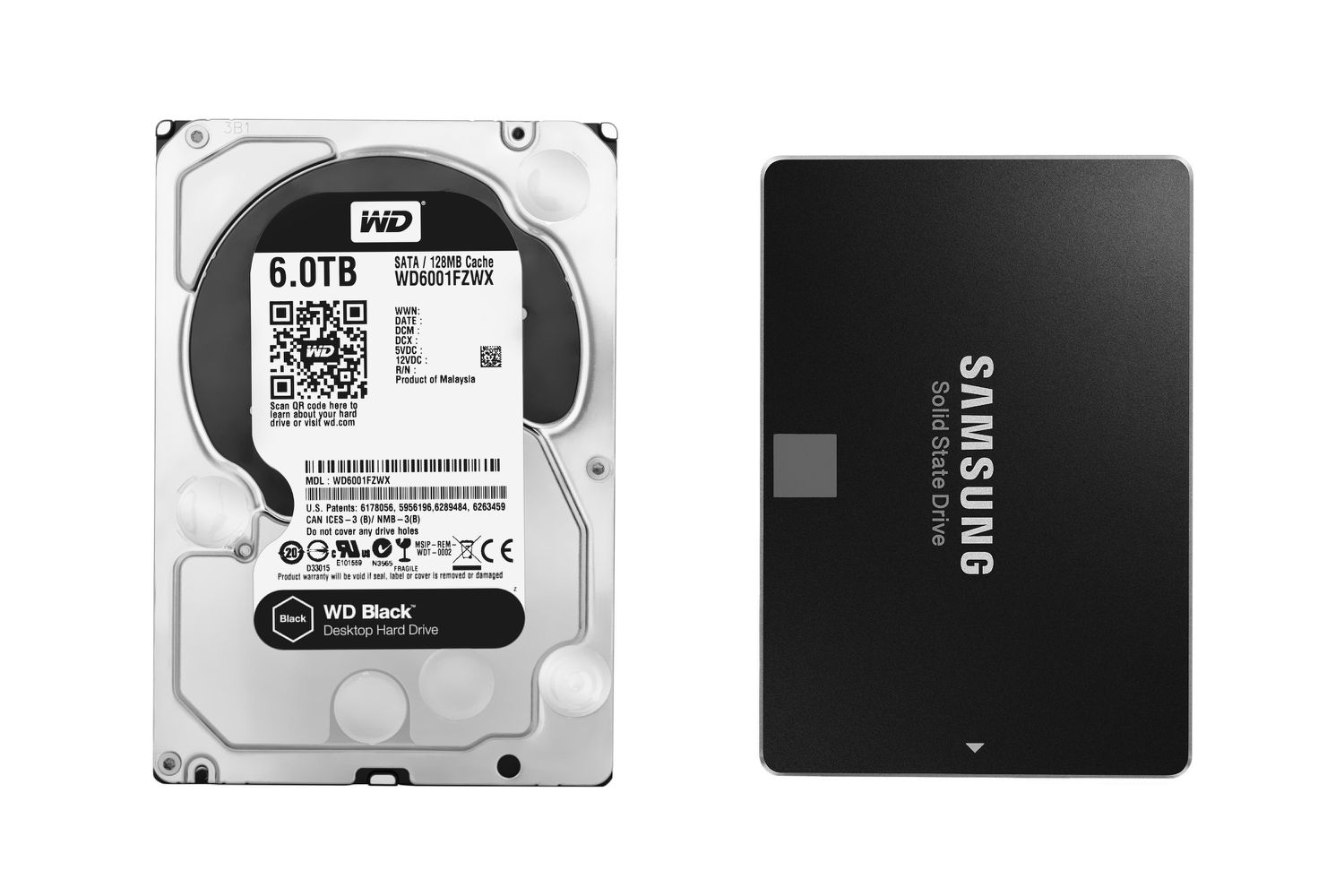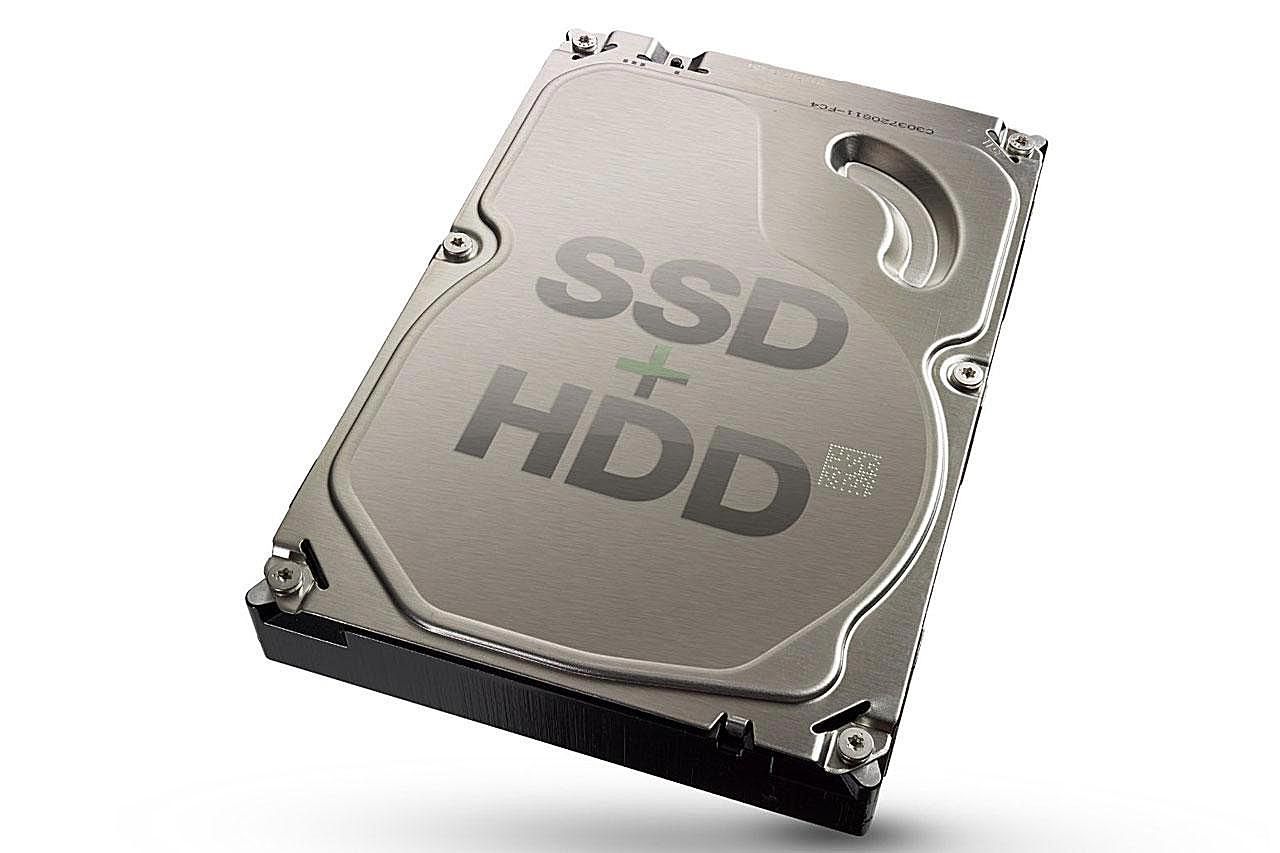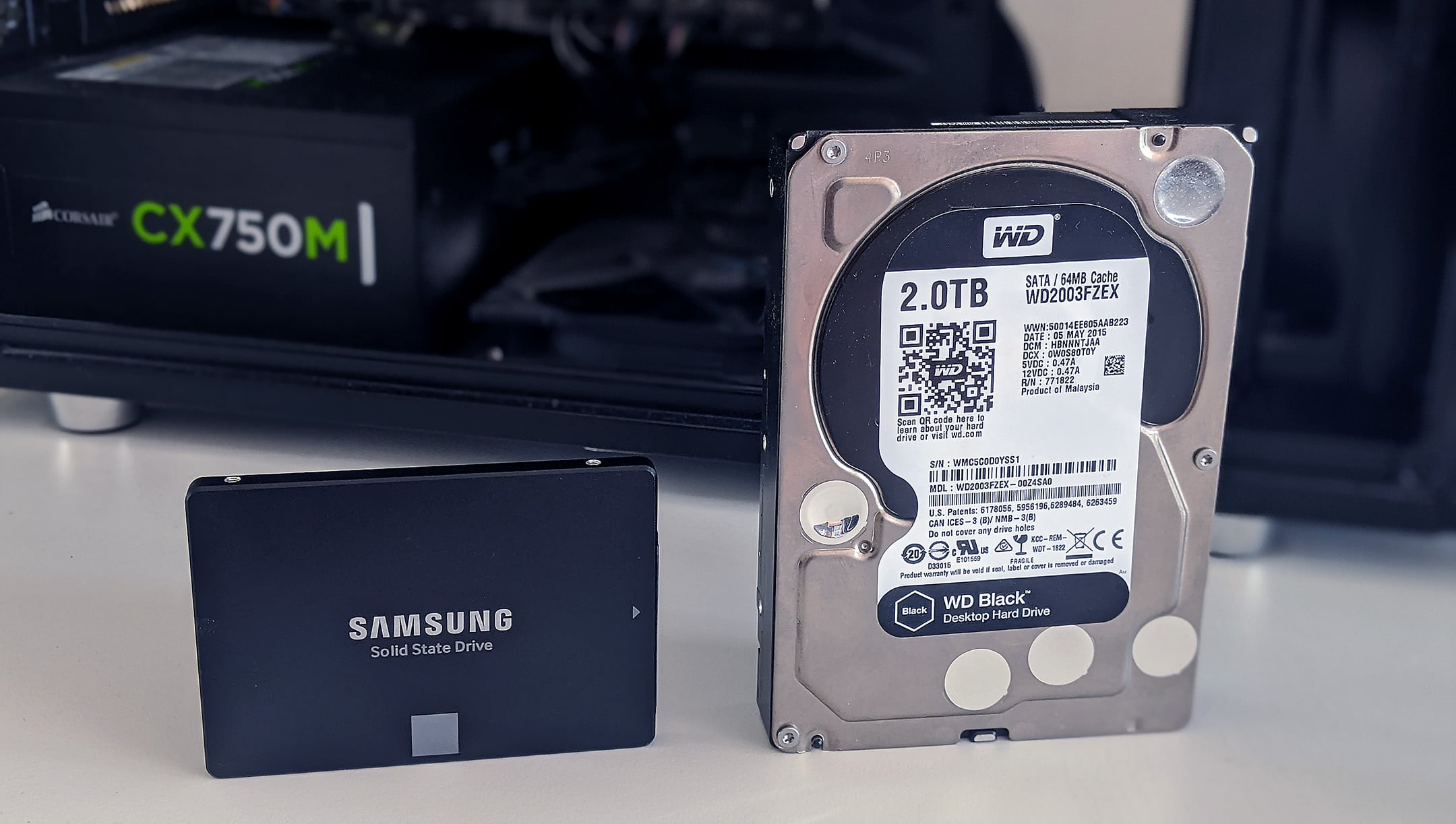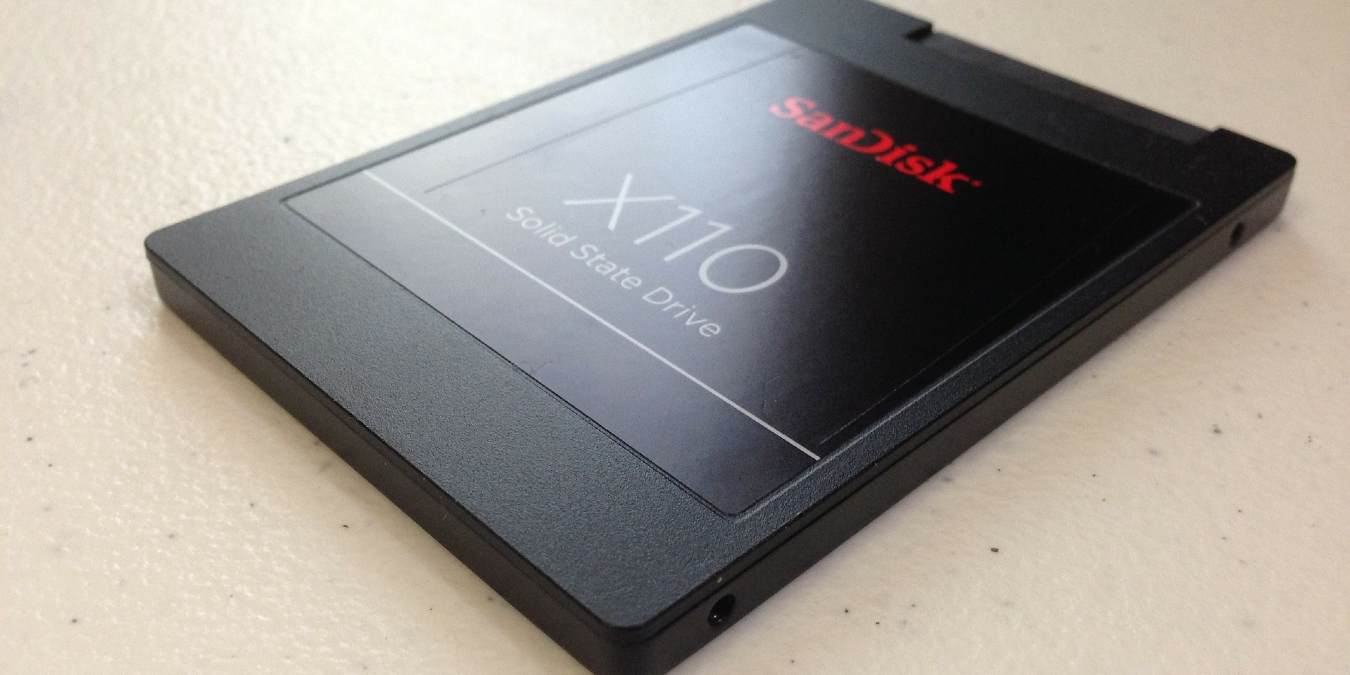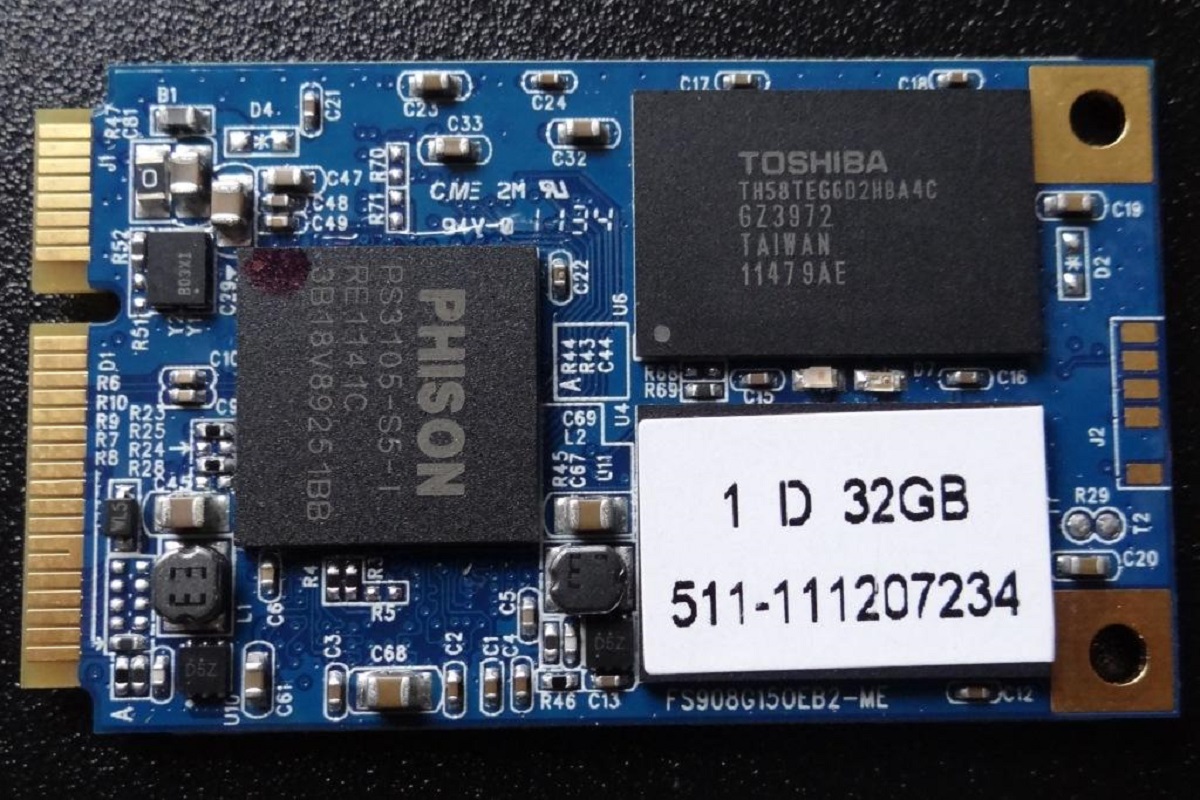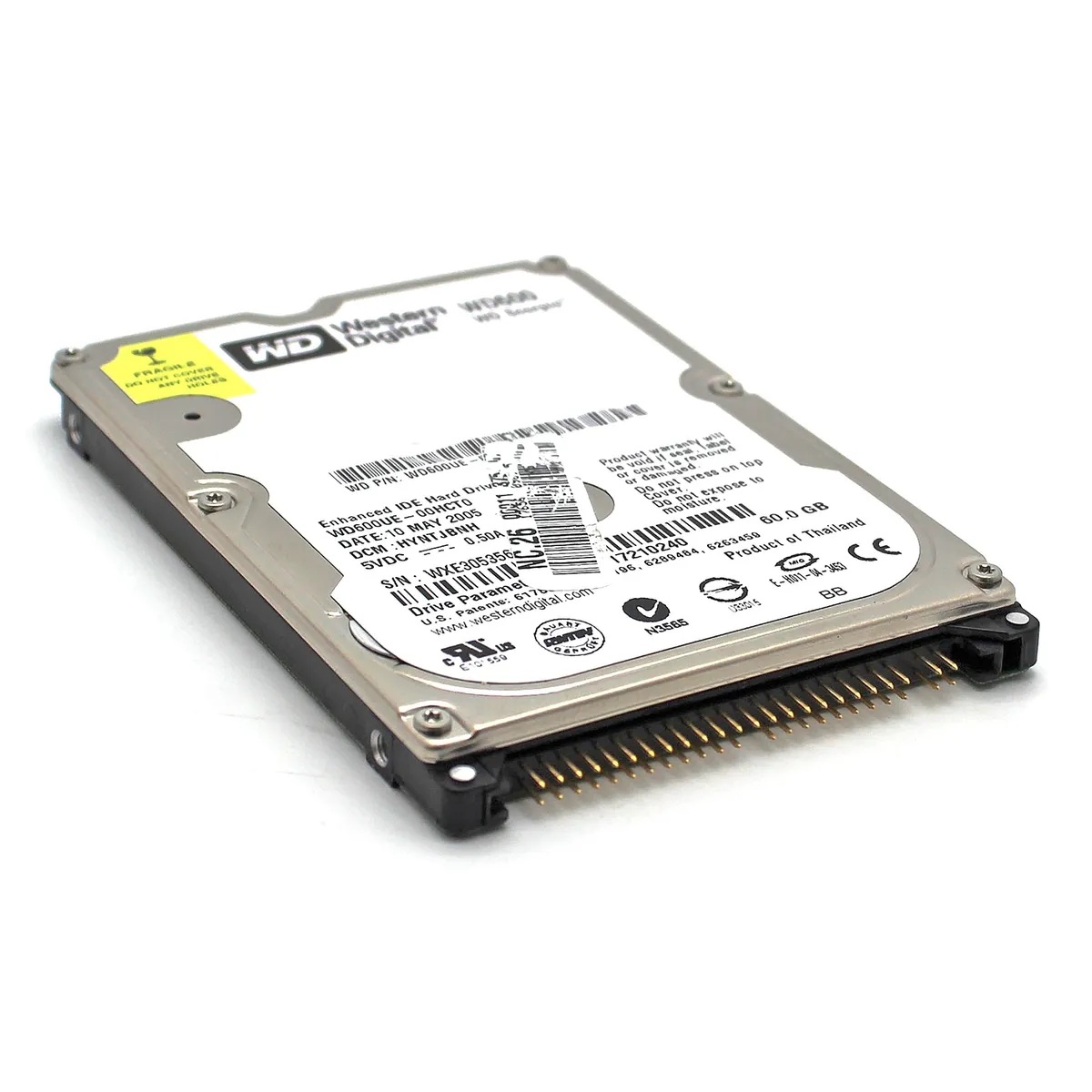Introduction
Welcome to the world of solid-state drives (SSD) and hard disk drives (HDD), where speed and storage capacity are key considerations. In this digital age, where data is growing exponentially, optimizing storage solutions has become crucial. One effective way to achieve this is by utilizing SSD as a cache for HDD. In this article, we will explore what SSD cache is and how it can be used to enhance the performance of your computer system.
SSD cache is a technology that combines the speed of an SSD with the storage capacity of an HDD. It works by storing frequently accessed data on the SSD, allowing faster retrieval compared to traditional HDDs. This approach leverages the strengths of both storage technologies to deliver enhanced performance and responsiveness.
There are several advantages of using SSD as a cache for HDD. Firstly, it provides a significant boost in overall system performance. By intelligently caching frequently accessed data on the SSD, the computer can retrieve it quickly, resulting in faster boot times, application launches, and file transfers. This means that tasks that previously took minutes can now be accomplished in seconds.
Secondly, SSD caching can enhance the lifespan of the HDD. Since the SSD handles the bulk of the read and write operations, the HDD experiences reduced usage, leading to less wear and tear. This can prolong the lifespan of the HDD, saving you money on replacement costs.
Thirdly, SSD caching allows you to enjoy the benefits of both speed and storage capacity. While SSDs come with limited storage compared to HDDs, using an SSD as a cache allows you to have the best of both worlds. You can have a large-capacity HDD for storing data while benefiting from the speed of the SSD for frequently accessed files and applications.
The next section will discuss how to determine if your system has SSD caching capability. So, let’s dive in!
What is SSD Cache?
SSD cache is a technology that combines the speed of solid-state drives (SSD) with the storage capacity of hard disk drives (HDD) to optimize data access and enhance overall system performance. It works by storing frequently accessed data on the SSD, allowing for quick retrieval and reducing the need to rely solely on the slower HDD.
When data is accessed from the computer’s storage, the SSD cache intelligently determines which data is frequently accessed and stores it on the SSD. This process is typically automated and transparent to the user. As a result, the computer can quickly retrieve frequently used files, applications, and data, enhancing the overall responsiveness and speed of the system.
The SSD cache operates on the principle of minimizing the latency of data access. While SSDs are known for their fast read and write speeds, they generally come with limited storage capacities compared to HDDs. By utilizing SSD as a cache for HDD, the system can take advantage of the SSD’s speed while benefiting from the larger storage capacity of the HDD.
SSD caching is particularly beneficial in situations where there is a mix of frequently accessed and less accessed data. For example, in a gaming system, the SSD cache can store game files, improving load times and providing a smoother gaming experience. Similarly, in a business environment, frequently accessed files and applications can be cached on the SSD to boost productivity.
It is important to note that SSD caching is different from using an SSD as the primary storage drive. In the case of SSD caching, the SSD works alongside the HDD, providing accelerated access to frequently used data. On the other hand, using an SSD as the primary drive involves installing the operating system and storing all data on the SSD.
SSD caching can be implemented on various operating systems, including Windows, macOS, and Linux. The configuration and setup process may differ depending on the specific system and software being used. In the next sections, we will explore how to determine if your system has SSD caching capability, and we will provide step-by-step instructions for setting up SSD cache for HDD on different platforms.
Advantages of Using SSD as Cache for HDD
Utilizing an SSD as a cache for HDD offers several advantages that can greatly enhance the performance and efficiency of your computer system.
One of the primary advantages is improved overall system performance. By caching frequently accessed data on the SSD, retrieval times are significantly reduced, resulting in faster boot times, application launches, and file transfers. This means tasks that previously took minutes can now be completed in seconds, improving productivity and user experience.
Another advantage is the extended lifespan of the HDD. Since the SSD handles most of the read and write operations, the HDD experiences reduced usage, leading to less wear and tear. This can help prolong the lifespan of the HDD, ultimately saving you money on replacement costs.
Furthermore, utilizing an SSD cache allows you to take advantage of both speed and storage capacity. While SSDs typically offer faster performance but limited storage, using an SSD as a cache enables you to leverage the speed of the SSD for frequently accessed files and applications, while still benefiting from the larger storage capacity of the HDD.
SSD caching also brings benefits in terms of power efficiency. Since the SSD can quickly retrieve data, the HDD can remain in a low-power state for longer periods, reducing overall power consumption. This can be particularly beneficial for laptops or systems that prioritize energy efficiency.
Another advantage is the flexibility to customize the caching configuration based on your specific needs. SSD caching software and tools often provide options to select the size of the cache, specify which files should be cached, and adjust the caching algorithm. This allows you to optimize the caching setup according to your usage patterns and storage requirements.
Lastly, utilizing an SSD cache for HDD can be a cost-effective solution. While SSDs tend to be more expensive per gigabyte compared to HDDs, utilizing an SSD as a cache allows you to achieve the performance benefits of an SSD without the need to invest in a large-capacity SSD. This can be a more budget-friendly option, especially for those with a preference for larger storage capacities.
In the next sections, we will explore how to determine if your system has SSD caching capability and provide step-by-step instructions for setting up SSD cache for HDD on different operating systems.
How to Determine if Your System has SSD Caching Capability
Before setting up an SSD cache for your HDD, it is essential to ensure that your system has the necessary capability to support SSD caching. Here are a few methods to determine if your system is SSD caching compatible:
1. Manufacturer Specifications
Start by checking the specifications provided by the manufacturer of your computer or motherboard. Look for information regarding SSD caching support or any specific technologies like Intel Smart Response Technology or AMD StoreMI. If your system includes these features, it is likely to have SSD caching capability.
2. Check BIOS/UEFI Settings
Access your system’s BIOS/UEFI settings and look for options related to storage or caching. Some systems have built-in options to enable or configure SSD caching. If you find such settings, it indicates that your system has SSD caching support.
3. Software Utility
Check if your computer manufacturer provides any software utility for managing storage-related features. These utilities often include information about SSD caching support and may provide options for enabling and configuring it. Visit the manufacturer’s website or check the support documentation to see if any software utility is available.
4. Online Resources
Search online for your specific computer model or motherboard to see if other users have reported using SSD caching successfully. Online forums, user communities, and technical documentation can provide valuable insights into the SSD caching capabilities of your system.
5. Third-Party Software
If your system doesn’t have built-in SSD caching support, you may still be able to utilize third-party software solutions. Certain software applications, such as PrimoCache and fancyCache, provide SSD caching functionality that can be installed and configured on your system. Explore these options if you are looking to implement SSD caching on a system that doesn’t have native support.
By using the methods mentioned above, you can determine if your system is SSD caching capable. Once you confirm compatibility, you can proceed with setting up the SSD cache for your HDD, which will be discussed in the following sections based on different operating systems.
Setting Up SSD Cache for HDD on Windows
If you have determined that your Windows system is SSD caching capable, you can now proceed with the setup process. Here’s a step-by-step guide:
1. Check Disk Configuration:
Before setting up the SSD cache, ensure that your HDD and SSD are properly connected and recognized by your Windows system. You can check this by navigating to the “Disk Management” utility. Make a note of the drive letters assigned to your HDD and SSD.
2. Install SSD Caching Software:
There are several SSD caching software options available for Windows. One popular choice is the Intel Rapid Storage Technology (IRST) utility, which supports SSD caching on Intel-based systems. Download and install the appropriate version of the software based on your system configuration.
3. Configure SSD Cache:
Launch the SSD caching software and follow the on-screen instructions to configure the cache. Select the HDD and SSD drives that you want to use for caching. Specify the size of the cache allocation and choose the caching algorithm based on your preferences. You may also have the option to prioritize certain files or applications for caching.
4. Enable SSD Cache:
Once the cache configuration is complete, enable the SSD cache feature. This may involve restarting your system for the changes to take effect. The software will automatically start caching frequently accessed data on the SSD, providing improved performance for your HDD.
5. Monitor and Manage the SSD Cache:
After setting up the SSD cache, it is essential to regularly monitor and manage its performance. The caching software may provide a dashboard or utility that allows you to view cache statistics, monitor cache hit rates, and adjust cache settings if needed. Stay informed about the cache status to ensure optimal performance.
6. Update Software and Drivers:
Periodically check for updates for both your caching software and storage drivers. Updates often include bug fixes, performance improvements, and new features that can enhance the SSD caching functionality on your Windows system. Keep your software and drivers up to date for the best experience.
With these steps, you can successfully set up an SSD cache for your HDD on a Windows system. Enjoy the improved performance and responsiveness that SSD caching brings to your computer.
Setting Up SSD Cache for HDD on macOS
If you’re using a macOS system and have confirmed that it supports SSD caching, you can proceed with setting up the cache. Below are the steps to follow:
1. Check Disk Configuration:
Ensure that your HDD and SSD are properly connected to your macOS system and recognized in the “Disk Utility” application. Take note of the disk identifiers for both drives.
2. Enable FileVault (Optional):
If you have FileVault enabled, it is recommended to disable it temporarily during the setup process. You can turn it back on once the SSD cache configuration is complete.
3. Create a Fusion Drive:
macOS offers a feature called Fusion Drive, which combines the SSD and HDD into a single logical volume. Open Terminal and use the “diskutil” command to create a Fusion Drive by merging the SSD and HDD. This will create a single volume that acts as the cache for the HDD.
4. Format the Fusion Drive:
After merging the drives, format the newly created Fusion Drive using Disk Utility. Choose the appropriate file system and partition scheme based on your preferences and requirements.
5. Enable FileVault (Optional):
If you had FileVault enabled initially, you can re-enable it now to ensure data security and encryption on your Fusion Drive.
6. Configure the SSD Cache:
macOS handles SSD caching automatically when you create a Fusion Drive. The operating system dynamically manages the data placement on the SSD and HDD based on usage patterns. Therefore, there is no additional configuration required for the SSD cache.
7. Monitor and Manage the Fusion Drive:
You can monitor the Fusion Drive and view its status using the “diskutil” command in Terminal or through Disk Utility. macOS will handle the caching automatically, optimizing performance and data placement between the SSD and HDD.
8. Update macOS and Drivers:
Regularly update macOS and keep your system drivers up to date to ensure optimal performance and stability of your Fusion Drive. Updates often include improvements and bug fixes related to storage and caching features.
By following these steps, you can successfully set up an SSD cache for your HDD on macOS, utilizing the Fusion Drive technology. Benefit from the improved performance and seamless data management provided by the SSD caching functionality of macOS.
Setting Up SSD Cache for HDD on Linux
If you’re using a Linux system and want to set up an SSD cache for your HDD, Linux provides several options to accomplish this. Here’s a step-by-step guide:
1. Check Disk Configuration:
Ensure that both your HDD and SSD are properly connected to your Linux system and recognized by the operating system. Use the “lsblk” command in the terminal to list all available drives and note down the device names of your HDD and SSD.
2. Install Required Software:
Depending on the Linux distribution you are using, you will need to install the appropriate software to enable SSD caching. Popular options include bcache, dm-cache, and EnhanceIO. Use your package manager (e.g., apt, yum, or zypper) to install the necessary software.
3. Create a Cache Device:
Using the software you installed, create a cache device that will serve as the cache for your HDD. This cache device should be the SSD. Follow the documentation and guides provided by the software to create and configure the cache device.
4. Create a Cached Device:
Next, create a cached device that combines the cache device (SSD) and the HDD. This combined device will act as a single logical volume with caching capabilities. Again, refer to the software documentation for detailed instructions on creating and configuring the cached device.
5. Format and Mount the Cached Device:
Once the cached device is created, format it with the desired file system using the appropriate mkfs command. Then, mount the cached device to a directory in your file system, ensuring that it is correctly mounted and accessible.
6. Monitor and Manage the Cache:
The cache management software you installed should provide tools and utilities to monitor and manage the SSD cache. Monitor the cache hit rates, usage statistics, and adjust settings if needed to optimize performance and utilization.
7. Automate the Setup:
To ensure the SSD cache is automatically configured and mounted during system startup, add appropriate entries to your system’s configuration files. This will prevent the need for manual setup and configuration every time you reboot your Linux system.
8. Update Software and Drivers:
Periodically check for updates for the caching software and storage drivers on your Linux system. Updates may include bug fixes, performance enhancements, and new features that can improve the functionality and stability of your SSD cache setup.
By following these steps and leveraging the available software options, you can successfully set up an SSD cache for your HDD on a Linux system. Enjoy improved performance and responsiveness with the added benefit of caching frequently accessed data on the SSD.
Configuring SSD Cache Settings
After setting up an SSD cache for your HDD, it’s important to configure the cache settings to optimize its performance and efficiency. Here are some key settings to consider:
1. Cache Size:
Determine the size of the cache allocation for the SSD. This setting specifies how much space on the SSD will be used to store the cached data. A larger cache size can potentially improve performance for more data, but it may also reduce the storage capacity available for other purposes.
2. Caching Algorithm:
Choose the caching algorithm that best suits your usage patterns and requirements. Different algorithms, such as Least Recently Used (LRU) or Adaptive Replacement Cache (ARC), determine how data is cached and evicted from the SSD cache. Research and experiment with different algorithms to find the one that provides the best performance for your specific workload.
3. Files and Applications to Cache:
Some SSD caching software allows you to specify certain files, folders, or applications that should be prioritized for caching. Identify the frequently used files or applications in your workflow and configure the cache to prioritize caching them. This ensures that the most critical data is readily available on the SSD for quick access.
4. Write Policies:
Consider the write policies for the SSD cache. Write-through and write-back are two common options. Write-through immediately writes data to both the cache and the HDD, ensuring data durability but potentially impacting performance. Write-back initially writes data to the cache and then asynchronously writes it to the HDD, providing better performance but with a slight risk of data loss in case of a power failure.
5. Cache Monitoring and Management:
Ensure that you have access to a cache monitoring and management tool provided by the caching software. This allows you to track cache utilization, hit rates, and other performance statistics. Monitor these metrics regularly and make adjustments as needed to maintain optimal cache performance.
6. Eviction Policy:
Consider the eviction policy for the SSD cache. When the cache reaches its maximum capacity, it may need to evict some data to make space for new entries. Understanding the eviction policy of the caching software can help you predict how the cache behaves under different scenarios and fine-tune cache settings accordingly.
7. Temperature and Health Monitoring:
Some SSD caching software provides temperature and health monitoring for the SSD. Keep an eye on these metrics to ensure the SSD is running within acceptable temperature ranges and that its health is maintained. High temperatures and signs of degradation should be promptly addressed to prevent potential issues.
Remember that the specific configuration options and settings may vary depending on the SSD caching software you are using. Consult the software documentation and explore the available settings to optimize your SSD cache setup.
Monitoring and Managing the SSD Cache
Once you have set up an SSD cache for your HDD, it’s essential to regularly monitor and manage the cache to ensure its optimal performance. Here are some key aspects to consider when monitoring and managing your SSD cache:
1. Cache Statistics:
Utilize the tools and utilities provided by your SSD caching software to monitor cache statistics. These may include cache hit rates, cache usage, and the amount of data stored in the cache. Keeping an eye on these metrics will help you understand how efficiently the cache is functioning.
2. Cache Eviction:
As the cache fills up, it may need to evict data to make space for new entries. Monitor cache eviction to ensure it is performing as expected. If you notice frequent cache evictions, it may indicate that the cache size needs to be adjusted, or certain files or applications need to be prioritized for caching.
3. Cache Refresh Policies:
Some caching software utilizes refresh policies to determine when data in the cache should be refreshed from the underlying HDD. Understand and adjust these policies based on your usage patterns. Too frequent or infrequent refreshes may impact cache performance, so finding the right balance is crucial.
4. Capacity Planning:
Regularly assess the capacity of your SSD cache and evaluate if it’s sufficient for your needs. If you find that the cache is consistently running out of space or frequently needs to evict data, consider increasing the cache size or optimizing caching algorithms to accommodate more frequently accessed data.
5. Software Upgrades:
Keep the SSD caching software and related drivers up to date with the latest releases and updates. Software upgrades often bring performance improvements, bug fixes, and new features that can enhance the functionality and stability of the cache. Check for updates periodically and apply them as necessary.
6. Troubleshooting:
If you encounter any issues or performance bottlenecks with your SSD cache, consult the documentation provided by the caching software and seek assistance from support forums or communities. Troubleshooting techniques and solutions specific to your caching software might resolve any issues you encounter effectively.
7. Regular Maintenance:
Perform regular maintenance tasks to keep your SSD cache running smoothly. This may include tasks like cleaning up unnecessary cached files, optimizing caching algorithms, and ensuring that the caching software itself is updated and functioning correctly.
By actively monitoring and managing your SSD cache, you can ensure that it continues to operate at its best potential, providing the desired performance benefits for your system. Regular maintenance and adjustments based on usage patterns will contribute to an efficient and reliable SSD caching setup.
Best Practices for Optimizing SSD Cache Performance
To maximize the performance of your SSD cache and ensure optimal utilization, consider implementing the following best practices:
1. Choose the Right SSD:
Selecting a high-quality SSD with a fast read and write speed is crucial for achieving optimal cache performance. Consider factors such as the SSD’s capacity, endurance, and compatibility with your system to ensure it can handle the workload and provide reliable performance over time.
2. Properly Size the Cache:
Ensure that the cache size is sufficient for your workload. An appropriately sized cache allows for frequent access to frequently used data. If the cache size is too small, the SSD cache may not be able to accommodate all frequently accessed data, reducing its effectiveness. On the other hand, an oversized cache may result in wasted storage capacity.
3. Balance Cache Hit Rate:
Achieving a high cache hit rate is essential for optimal performance. Monitor the cache hit rate regularly and adjust cache settings or prioritize certain files or applications for caching to improve the retrieval of frequently accessed data from the cache. Aim for a balance that provides the maximum cache hit rate and efficient data utilization.
4. Prioritize Critical Files or Applications:
If certain files or applications are critical for your workflow, prioritize them for caching. This ensures that the most important data is readily available on the SSD for faster access. Configure the caching software to give priority to these files or applications, further enhancing performance for your specific needs.
5. Regularly Monitor and Manage:
Continuously monitor and manage the SSD cache to ensure optimal performance. Keep track of cache statistics, eviction rates, and cache hit rates to identify any potential issues or areas for improvement. Use the provided tools and utilities to monitor and adjust cache settings as needed to maintain optimal performance over time.
6. Regularly Update Software and Firmware:
Keep the caching software and SSD firmware up to date with the latest releases and updates. Updating the software and firmware can bring bug fixes, performance enhancements, and compatibility improvements that can positively impact the performance and stability of the SSD cache.
7. Avoid Unnecessary Write Operations:
Minimize unnecessary write operations whenever possible. Frequent unnecessary write operations not only consume SSD write endurance but also decrease the available cache space. Optimize your caching configuration to focus on read-intensive workloads and minimize unnecessary write activity to prolong the lifespan of your SSD cache.
8. Regularly Assess Workload and Adjust:
Periodically assess your workload and adjust the cache configuration accordingly. As your usage patterns change, you may need to modify the cache size, caching algorithms, or file/application prioritization to match the evolving demands of your specific workload. Regular assessments and adjustments ensure that the cache is optimized for your current needs.
By implementing these best practices, you can optimize the performance of your SSD cache. Maximizing cache efficiency and regularly adapting to changing workloads will result in improved responsiveness and enhanced overall system performance.
Conclusion
Utilizing an SSD as a cache for an HDD is an effective way to enhance the overall performance and efficiency of your computer system. By combining the speed of an SSD with the storage capacity of an HDD, you can enjoy faster boot times, application launches, and file transfers, ultimately improving your productivity and user experience.
Throughout this article, we explored the concept of SSD caching and its advantages. SSD caching not only boosts system performance but also extends the lifespan of the HDD by reducing its usage. Additionally, it allows you to have the best of both worlds – the speed of the SSD and the storage capacity of the HDD.
We discussed how to determine if your system has SSD caching capability on Windows, macOS, and Linux. Depending on your operating system, you can choose different caching software options and follow the specific installation and configuration steps outlined in the respective sections.
Furthermore, we examined important aspects of configuring and managing the SSD cache, such as cache size, caching algorithms, file prioritization, write policies, and regular maintenance. By following best practices and monitoring the cache performance, you can optimize the utilization and effectiveness of your SSD cache.
Remember to regularly update your software and firmware, evaluate workload patterns, and adjust cache settings accordingly. This ensures that your SSD cache remains efficient and performs at its best.
In conclusion, SSD caching provides a cost-effective solution to enhance system performance by leveraging the speed of an SSD while benefiting from the storage capacity of an HDD. By properly setting up, configuring, and monitoring the SSD cache, you can enjoy the advantages of improved speed, responsiveness, and overall system efficiency.









